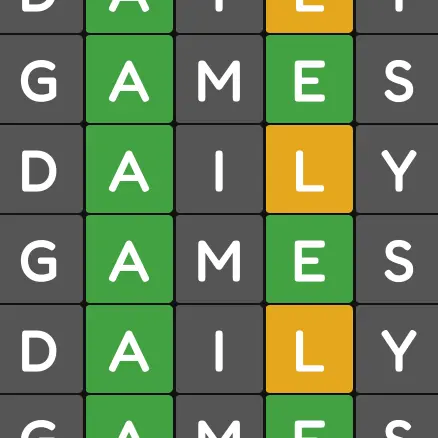Dillon, you son of a bitch you piece of shit!
- 2 Posts
- 49 Comments
Also in the UK but needed no clues. I guess I’ve been exposed to enough American media to at least be aware of these things.

 1·10 days ago
1·10 days agoI have my dock plugged into a smart plug and the laptop set in the BIOS to turn on when it receives power. I have an NFC tag on my coffee machine that I bloop while I’m making my morning brew, and that turns the dock on so that everything’s ready when I move into the office.
For turning things off I have HASS.Agent installed and sending state updates (locked, unlocked, etc, which is useful for other automations) and when that sensor goes unavailable for 15 minutes it turns the plug off. I find that’s long enough to allow it to reboot for updates and what not.
The sensor does report shutdown, reboot, and sleep states but I found that it often happens too quickly to get the change sent, so the unavailable state is more reliable.

 26·28 days ago
26·28 days agoUnless you’re hosting VHDs and need maximum throughput (in which case use NFS), SMB is going to be the easiest to setup and maintain across those 4 platforms.
The Linux SMB implementation is decent and supports the latest version of the protocol (or close to, at least) whereas NFS in Windows ain’t so great and is a bit of a pig to get working in my experience.
Thirded. It’s helped me a lot with picking up the compose syntax, to the point that I’m now comfortable combining disparate services into their own stacks. And I can spin something up from an example compose in less than a minute.
Z2M. I had a ZHA setup and I’ll give it to them, it was super easy to setup (barely an inconvenience). Then I bought a set of sockets with power monitoring but found that they used a non-standard way of reporting those stats.
They were seemingly quite new and both ZHA and Z2M had ‘quirks’ submitted very quickly to make them work, but while the Z2M quirk was approved and added almost straight away, 2 or 3 months later I was still waiting for the ZHA one to be approved.
Then, like you, I wanted to change the Zigbee channel and took the opportunity to switch to Z2M where the sockets and their power monitoring have been working perfectly ever since. It’s definitely more complicated to setup initially but you get more control overall and, at least from my experience, the overall device support is much better.
Note: I did initially have loads of stability issues when making the switch, but it was due to me flashing the combined Zigbee+Thread firmware to my Sonoff stick. The fix was to turn off the OpenThread Border Router in the Silabs addon and then everything was stable again. I don’t have any Thread devices yet, of course.

 4·2 months ago
4·2 months agoITT a surprising number of people who remember having these tins as kids, including me. I’ll have to see if my parents still have theirs.

 2·2 months ago
2·2 months agoThis looks neat, will definitely give it a go, cheers!

 2·2 months ago
2·2 months agoI just recently put in an N100 mini PC to run as a Plex server. Cost me about £160, pulls all of 6W when idle, and it doesn’t break a sweat when transcoding no matter what I throw at it. As a media server I can’t recommend them highly enough.

 11·2 months ago
11·2 months agoThis is the correct answer. Due to wear levelling, a traditional drive wipe program isn’t going to work reliably, whereas most (all?) SSDs have some sort of secure erase function.
It’s been a while since I read up on it but I think it works due to the drive encrypting everything that’s written to it, though you wouldn’t know it’s happening. When you call the secure erase function it just forgets the key and cycles in a new one, rendering everything previously written to it irrecoverable. The bonus is that it’s an incredibly quick operation.
Failing that, smash it to bits.

 2·2 months ago
2·2 months agoVery little. I have enough redundancy through regular snapshots and offsite backups that I’m confident enough to let Watchtower auto-update most of my containers once a week - the exceptions being pihole and Home Assistant. Pihole gets very few updates anyway, and I tend to skip the mid-month Home Assistant updates so that’s just a once a month thing to check for breaking changes before pushing the button.
Meanwhile my servers’ host OSes are stable LTS distros that require very little maintenance in and of themselves.
Ultimately I like to tinker, but once I’m done tinkering I want things to just work with very little input from me.

 1·2 months ago
1·2 months agoGotta hold my hands up and admit that in my initial haste to confirm the price I fell victim to the Play Store putting sponsored results ahead of what you actually searched for and I installed some crap called minimalist launcher, which charges £70 for a lifetime license. That’s what my “insane” comment was based on.
In comparison it’s nowhere near that bad for Niagara, but it is still pricey compared to most apps, and I balk at paying a subscription for software in general so that still stands.
Might give it another go after all…

 5·2 months ago
5·2 months agoReading the article and justification given I do actually get the idea of it. They want to levarage the parent company’s clout and connections in order to convince other app makers into implementing a way for Sesame, the universal search app/plugin, to pull results directly from those apps. For the parent company it would give them a USP in the analytics market.
In short: Think of searching for a product from the launcher and rather than it opening Google, it returns results directly from the Amazon app, or eBay, or any other app that supports the functionality. Obviously there’ll be an affiliate kickback for any click-through and you’ve got a decent revenue source.
It’s a good idea, I get it. Would I feel comfortable using it? I don’t know. On the one hand it just cuts out the middle-man of searching for and clicking through to products via Google etc. On the other hand, all of the concerns already raised in this thread!

 5·2 months ago
5·2 months agoI like Niagara but it’s insanely expensive, especially as a subscription. I don’t know how people justify it.
Edit: The above was based on me getting duped by a Play Store sponsored search result and installing some crap that charges £70 for a lifetime licence. In comparison Niagara feels like much better value, but it’s still expensive compared to most apps and I still don’t like subscribing to software in general.
Yeah I’m not disagreeing that it’s audible but having read the instructions it leaves a lot of unanswered questions like the above. Presumably people with more knowledge and time than me will figure it all out and write step-by-step guides at some point.
Yes, exactly. And how do you even tell the app that you want to self host? I see no option for pointing it to a different core server/bridge.
… Unless you have to do it at the point of sign-up? I remember seeing an ‘advanced’ option on the login screen.
Yes I’m very interested in how they claim to have a zero knowledge model but also admit that their bridges decrypt and re-encrypt messages as they pass through. It might only be an ephemeral thing but surely it’s a massive, gaping target for bad actors to wire tap.
What’s the problem with Asterisk? FreePBX uses it and as far as I can tell, it’s the only way to get Lenny working.
I’d post mine but it’s just the default overview. I really should put some effort into making something good.



I’ll have to have a look when I’m next in the vacinity but I’m pretty sure I have an APC Easy UPS on mine and it works out of the box.
Let me get back to you…
Update: It’s an APC Back-UPS 850. No doubt the instructions banged on about requiring Powerchute but I just plugged it into the Syno and it worked fine. You do need to enable UPS support on the NAS itself of course, from Control Panel/Hardware & Power/UPS, and set it to USB UPS.